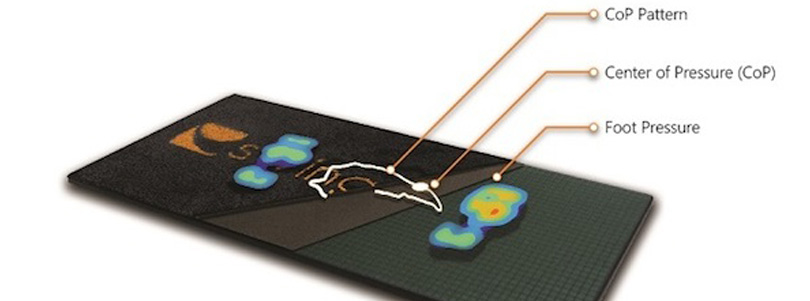Golf Science – Pressure Points

Would you like to hit the ball further by using some science-based interventions? Well then, all you need to do is apply some extra force to the club-head so it can be transferred to the golf ball! The best way to do this is to harness external force, primarily by “using the ground properly”. Dr. Scott Lynn, a professor in the department of kinesiology at California State University Fullerton, and Director of Research and Education for Swing Catalyst (a 3D Motion Plate brand), explains how.
First off, Lynn has been studying golf movement patterns for several years in his laboratory, and based on his experience, believes that humans can be quite “messy” and no two golfers will ever make the same mistakes to produce the same results. However, there are some common patterns that he sees a lot of the time. Many of his observations have been made using the unique Swing Catalyst product which combines a pressure plate with a force plate to provide readings on all possible interactions between the ground and the golfer’s feet.
The pressure plate indicates a center of pressure (CoP) point for each foot, which represents the point of application of vertical “ground reaction force” through that foot at any given time. Combined CoP for both feet is also calculated. CoP changes with movement, and we subconsciously adjust our CoP to maintain balance or to manipulate how we wish the body to move. It is this latter aspect that good golfers use to position their bodies, and thus the golf club, for impact. Additionally, the pressure “trace” of CoP, or how it moves as a golfer moves throughout the golf swing also helps to indicate how the ground is being “used”. One example of how golf instructors might use pressure plate information is to predict club path. For instance, if the pressure in the trail foot is closer to the heel and that in the lead foot closer to the toe, an in-to-out path and a possible draw pattern might result. There are many other swing features that a pressure mat or plate can indicate, including for the short game. However, Lynn cautions, most patterns are not universal, and are common to an extent only.
In the meantime, the force plate gives separate information about the linear, rotary and vertical forces which together comprise the directions of application of “ground reaction force” (GRF). Although folks in the industry use many different names to describe the three forces, linear (L) is a side-to-side translatory force. Rotary (R) force involves two oppositely directed forward-backward force through the two feet, producing rotation of the body. Vertical (V) force, finally, is what causes the lead side of the body to rise, closer to impact, to make the arc of the lead arm-and-club the longest possible so there is greater velocity directed into the club-head.
An important source of force production in the swing has, for a long time, been thought to be through the “kinematic sequence”. This is a sequence in which the pelvis rotates before the shoulders which rotate before the arms and finally all the energy of those parts as they slow down is passed on to the next higher body segment, and eventually to the club-head. Lynn has seen a variety of kinematic sequences, but they always have pelvis first and arms last, while the in-between segments might move in different ways. He feels there is more consistency across golfers in their “kinetic sequence”, with, typically, L force being seen before R force, which occurs before V during the downswing. Even this can vary across different people.
For instance, one leading tour player has a pressure plate pattern which goes from trail heel at the top of the backswing to lead heel to lead toe, instead of the common one of trail heel to lead toe to lead heel. This might be expected of the player because his kinetic sequence too is unusual as he has an R-V-L pattern instead of the typically seen L-R-V one. So, according to Lynn, based on what a player wishes to achieve, a golfer and his/her coach can work out many beneficial changes in swing patterns for that particular golfer based on both pressure shifts and force patterns. Additionally, he adds, while a coach might get some idea of the movement a golfer makes (kinematic information), the eyes cannot see force patterns (kinetic information), so it is useful to work with plates which can measure ground reaction forces.
In recent years, famous golf instructors have begun to use pressure and GRF information in a variety of unique ways. For example, Mike Adams, one of the leading golf instructors of the 21st century, discovers whether a player is more L, R, or V dominant by having them perform some simple drills. He then proceeds to develop their movements based on their innate capabilities. It can thus be said that there are very many ways to use force and pressure plate information, and such information forms an integral part of a modern golf coach’s arsenal.
Kiran Kanwar is the developer of The Minimalist Golf Swing System -100% scientific, simple and specific. She has BS degrees in physics and math); MS degrees in sports science and nutrition; and is pursuing a PhD in biomechanics. She is a Class A Member: the LPGA, The NGA of India, The PGA of India. Visit her website: www.mgs.golf



